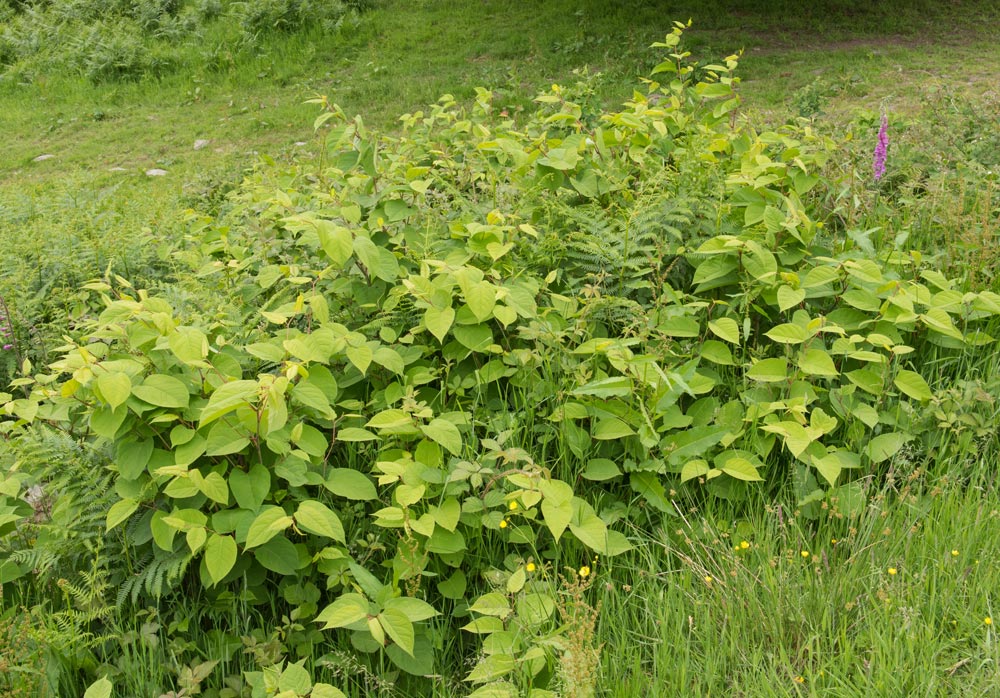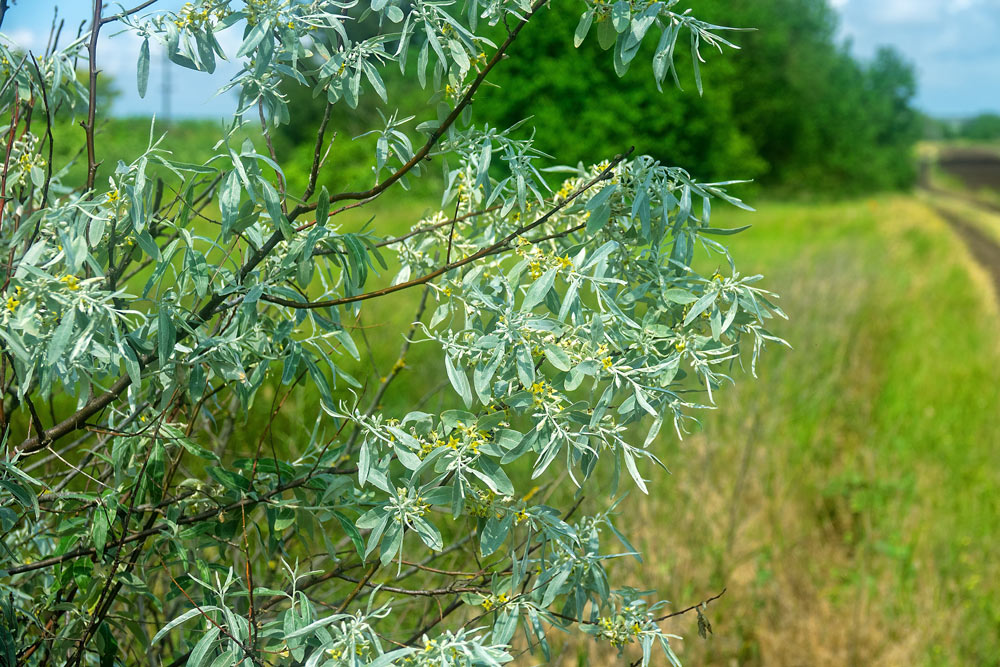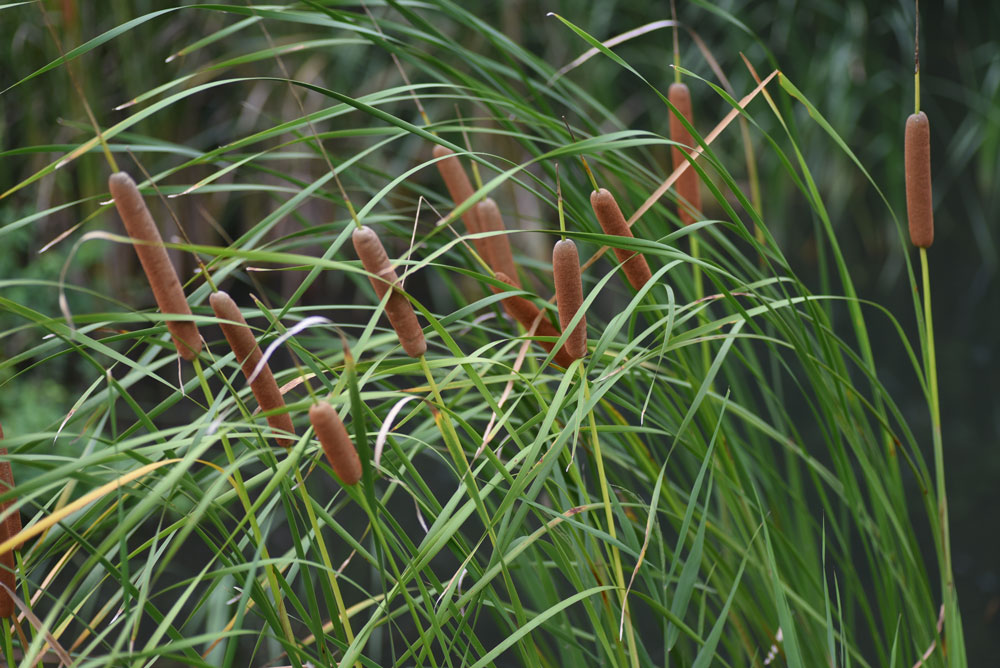
Not every plant that pops up in your garden is a welcome guest. Some might look harmless – or even beautiful – but don’t be fooled.
These garden troublemakers are invasive, aggressive, and downright destructive if left unchecked. They crowd out your favorite flowers, steal nutrients from the soil, and can quickly take over your yard before you know it.
This post highlights 21 plants that every gardener should watch out for.
If you see any of these in your yard, it’s best to pull them out fast!
1. Giant Hogweed

Giant Hogweed isn’t just any plant; it’s one you want to avoid. Its sap can cause severe skin burns and even blindness if it gets in your eyes.
This invasive plant is notoriously hard to control and can grow up to 14 feet tall. Aside from being a health hazard, it can also take over your garden, out-competing local plants.
2. Poison Ivy

You don’t want Poison Ivy in your garden. It’s notorious for causing itchy, painful rashes. Even a slight brush against its leaves can lead to discomfort.
Removing it is a challenge. It deeply roots and spreads quickly. Handling it requires care to avoid skin contact, making it a hassle to manage.
3. Kudzu

Kudzu grows quickly and can become invasive. Once it takes root, it tends to spread rapidly, covering trees, fences, and even buildings.
It’s tough to manage and often requires constant attention. You might find yourself spending more time controlling it than enjoying your garden.
Consider other ground covers or climbing plants that are easier to maintain and less likely to take over your space.
4. Japanese Knotweed

Japanese Knotweed spreads vigorously, and controlling its growth can be very challenging. Its roots can damage foundations, walls, and driveways, causing significant property damage.
Removing it often requires professional help and can be quite costly. While it may look attractive, its invasive nature makes it a plant to avoid in your garden.
5. Bishop’s Weed

Bishop’s Weed spreads quickly, making it tough to control in your garden. You might find it popping up in places where you don’t want it.
Its invasive nature crowds out other plants. Removing it can be a hassle, as even small pieces left behind can regrow.
6. English Ivy

English Ivy tends to spread quickly and can easily become invasive. You’ll find it climbing up walls and trees, often causing structural damage.
Its rapid growth means it requires regular maintenance. If left unattended, it can crowd out other plants and disrupt your garden’s ecosystem. Consider alternatives if low maintenance is your goal.
7. Wild Parsnip

Wild parsnip might seem like a good idea at first with its attractive yellow flowers.
However, it poses several risks, especially skin irritation upon contact with its sap.
You’ll find it hard to control its spread, as it easily invades gardens and natural areas.
It’s best to avoid planting it in your garden.
8. Castor Bean

Castor Bean plants might look striking in your garden, but they come with some serious drawbacks. They are highly toxic, which can be a concern if you have pets or children around.
Additionally, they tend to grow aggressively and can take over your garden space. This makes them hard to manage and control.
Finally, their large size can overshadow smaller plants, depriving them of sunlight. You might want to think twice before adding Castor Beans to your garden.
9. Stinging Nettle

Stinging Nettle can be a challenge to handle. The tiny hairs on its leaves and stems release irritants that cause a stinging sensation when touched.
You might find it difficult to manage in your garden, as it spreads quickly and can take over other plants. Even with gloves, handling this plant requires extra caution to avoid skin irritation.
10. Yellow Flag Iris

Yellow Flag Iris can be quite invasive. It tends to take over the garden space, crowding out other plants you may want to grow.
It also requires a significant amount of water, which can be challenging in dry climates. Your garden might become overrun if not managed properly.
11. Elephant Ear

Elephant Ear plants are striking with their large, dramatic leaves.
You might find their size overwhelming for smaller garden spaces.
These plants also need lots of water and maintenance, making them high-maintenance for busy gardeners.
Lastly, they can be invasive, spreading quickly and crowding out other plants in your garden.
12. Tree of Heaven

You might think the Tree of Heaven sounds exotic, but it’s quite the opposite. This tree grows rapidly and aggressively, taking over your garden in no time.
Its roots can damage sidewalks and foundations. Plus, the tree produces a foul odor that’s tough to ignore. Save yourself the trouble and choose a different tree.
13. Pampas Grass

Pampas Grass might look beautiful swaying in the wind, but it can easily take over your garden.
This plant grows rapidly and spreads aggressively, often crowding out other plants.
The sharp-edged leaves make it difficult to handle, posing a risk of injury.
14. Brazilian Pepper Tree

The Brazilian Pepper Tree may look appealing with its bright red berries, but it can quickly overrun your garden. You’ll find its aggressive root system difficult to control.
This plant is also known for causing allergic reactions. It’s best to steer clear if you have sensitive skin or respiratory issues. Keep your garden more manageable with less invasive alternatives.
15. Privet

Privet can quickly become overwhelming. This shrub spreads fast, and before you know it, your garden might look like a jungle.
It requires constant trimming to keep it looking neat. If you’re not a fan of regular maintenance, this plant may not be for you.
Additionally, its berries can be toxic to pets. Keep this in mind if you have furry friends roaming around.
16. Russian Olive

Russian Olive is a fast-growing tree, but you might want to think twice before planting it. This tree tends to spread aggressively, often crowding out native species.
Additionally, it has thorns that can make pruning and maintenance a hassle. Its invasive nature can lead to extra work in managing your garden.
17. Tansy Ragwort

Tansy Ragwort may seem like an interesting addition to your garden, but it can be quite invasive. It spreads quickly and can take over your garden in no time.
This plant is toxic to livestock and can pose a serious risk to animals. It’s best to avoid planting Tansy Ragwort and choose safer alternatives.
18. Water Hyacinth

Water Hyacinth spreads rapidly in ponds and lakes, quickly taking over. It clogs waterways and makes maintenance a headache.
Its dense growth can suffocate native aquatic plants and reduce oxygen levels, harming fish.
Managing Water Hyacinth often involves constant attention and removal efforts, making it a challenging plant to keep under control.
19. Musk Thistle

Musk Thistle might catch your eye with its pretty purple flowers. Unfortunately, it spreads quickly and can take over your garden in no time.
The spiny leaves make it hard to handle, often causing discomfort. You may find it tough to get rid of once it’s established due to its deep roots.
For these reasons, you might want to skip planting Musk Thistle.
20. Cattails

Cattails can be invasive and quickly spread, taking over garden ponds and wetlands. You might find them difficult to control once they establish themselves.
Their rapid growth can crowd out other plants you might want to grow. Managing cattails can become a full-time job, detracting from the joy of gardening.
21. Autumn Olive

Autumn Olive might sound charming, but it can quickly become a garden nuisance. Its rapid growth and prolific berry production make it hard to control.
You’ll find yourself battling to keep it from taking over other plants. While its berries attract wildlife, they also spread the seeds far and wide, making it even more invasive.
Understanding Plant Selection for Your Garden
Selecting the right plants for your garden can be both rewarding and challenging. The key is to consider various factors like climate, soil, and personal preferences while avoiding common mistakes.
Factors to Consider When Choosing Plants
First, think about your climate. Different plants thrive in different temperature ranges and humidity levels. Research which plants are native to your region as they are more likely to succeed.
Soil type and quality are crucial. Some plants require well-draining soil, while others need more moisture-retentive soil. Conduct a soil test to understand your garden’s pH and nutrient levels.
Consider sunlight exposure. Assess how much light your garden receives daily. Plants have different light requirements, from full sun to full shade, so choose accordingly.
Space and size matter too. Predict the mature size of the plants. Overcrowding can lead to competition for resources, so provide adequate space for growth.
Common Growing Mistakes
One common mistake is overwatering. Pay attention to the water needs of each plant. Overwatering can lead to root rot, while underwatering causes wilting.
Another error is incorrect planting depth. Planting too deep or too shallow can hinder growth. Follow the planting instructions specific to each type of plant.
Avoid neglecting pest control. Pests can quickly damage plants. Implement preventive measures and regularly inspect your garden for signs of infestation.
Lastly, disregard for seasonal timing can harm plants. Planting too early or too late in the season can expose plants to unsuitable conditions. Follow seasonal guidelines for planting.
Alternatives to Problematic Plants
Choosing the right plants can make gardening more enjoyable and less frustrating. Consider hardy and low-maintenance options to ensure a thriving garden with less effort.
Hardy Plant Options
Russian Sage is an excellent choice. This plant is extremely resistant to drought and pests. Its silvery leaves and lavender-blue flowers add a splash of color to your garden.
Sedum varieties, such as Sedum ‘Autumn Joy’, are also quite durable. These plants are not only hardy but also attract butterflies, making your garden lively and colorful.
Consider Daylilies as well. They can grow in various soil types and are quite forgiving if you forget to water them occasionally.
Low-Maintenance Plants
Hostas are perfect for shady areas and require minimal care. They offer lush foliage that can add texture to your garden.
Lavender is an attractive option that needs little water and thrives in full sun. Plus, it attracts pollinators and repels pests.
Yarrow is another fantastic choice. Requiring very little water, it grows well in well-drained soil and brings a splash of color with its bright flowers.
Ornamental Grasses like Miscanthus are also worth considering. These grasses need little maintenance and add movement and structure to the landscape.













